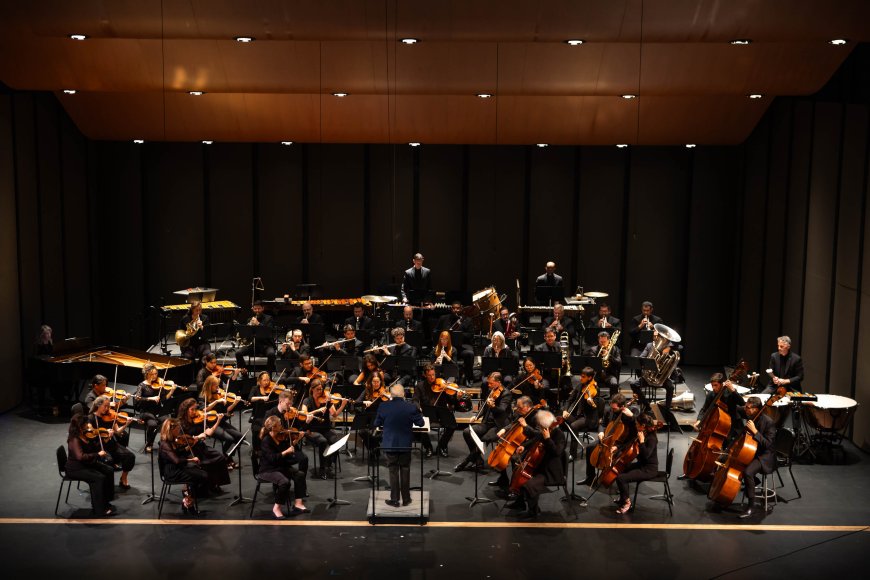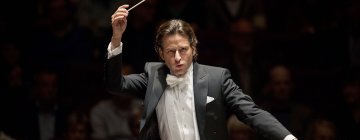
While the Los Angeles Chamber Orchestra’s 2025–2026 season officially opens on Sept. 13, the real starting point turned out to be Labor Day, Sept. 1. The orchestra gave a free, full-length concert at the Eli and Edythe Broad Stage that concluded a community micro-festival called “Music + The Body” produced in partnership with the National Multiple Sclerosis Society.
For the event, LACO snagged the services of a marquee conductor, Leonard Slatkin, who happened to be celebrating his 81st birthday. They devoted the entire program to concert works by Jeff Beal, most noted as a composer for television and film — and also, I was sorry to hear, someone living with MS.
For three hours prior to the concert, there was a swarm of family activities like a sound bath session, an instrument petting zoo, informational sessions on MS, a jazz band (the Stephan Hicks Quartet) on the patio, and even a drum circle from Rhythm and Truth for the kids and a few grown-ups. One nostalgic attendee’s memories reeled back to the Jerry Lewis Muscular Dystrophy Association telethons of Labor Day weekends past.
It was enlightening to hear what Beal, now 62, could do when freed from the tyranny of the click track. It turns out that he is an engaging and resourceful composer of concert music. His best work was a splendid violin concerto, Body in Motion, set in the usual fast-slow-fast template with movements entitled “head above water,” “breathing,” and “running.” Beal was fortunate to have as the soloist Kelly Hall-Tompkins, who possesses a tone that shone like a polished silver wire as she sailed through the piece from memory. It couldn’t have been a breeze to play — especially the hair-raising coda to the finale with its complicated solos and irregular orchestral punctuations — but the gracefully gesturing Slatkin and his soloist made it look easy.

Beal took the trouble to write a symphony for Slatkin’s 80th birthday — without a commission, as the conductor told the audience. The clever title for Slatkin’s birthday symphony is Four Score (do the math to get the joke), and the individual movements are named after qualities that Beal sees in Slatkin — “the hero,” “the lovers,” and, tellingly, “the jester.” So naturally, the opening movement does have a heroic cast — not so much in a cinematic way as in a vein of Americana that reflects Slatkin’s consistent championing of 20th-century American symphonic music. In the second movement, one wondered whether the prominent solo violin and solo cello represented the lovers, while the finale, which opened with amiably plunking pizzicato strings, maintained a consistent pulse before developing momentum down the stretch. This performance was the work’s world premiere, and the LACO played with unified brilliance for the birthday boy.
Early in the concert, Beal told touching tales about himself and his family while introducing a series of semiautobiographical vignettes grouped under the title New York Études. The 10 brief pieces were presented, for the first time, with dark, lusciously played string arrangements backing Beal’s solo piano. Almost everything was geared to a current vogue on the “classical” album charts — slow, simple, relaxed, often arpeggiated wanderings that are meant to neutralize the jangling stresses of everyday 21st-century life. It’s chill-out music, and some individual nervous systems are more attuned to this sort of thing than others. For me, 40 minutes of it was too much.

